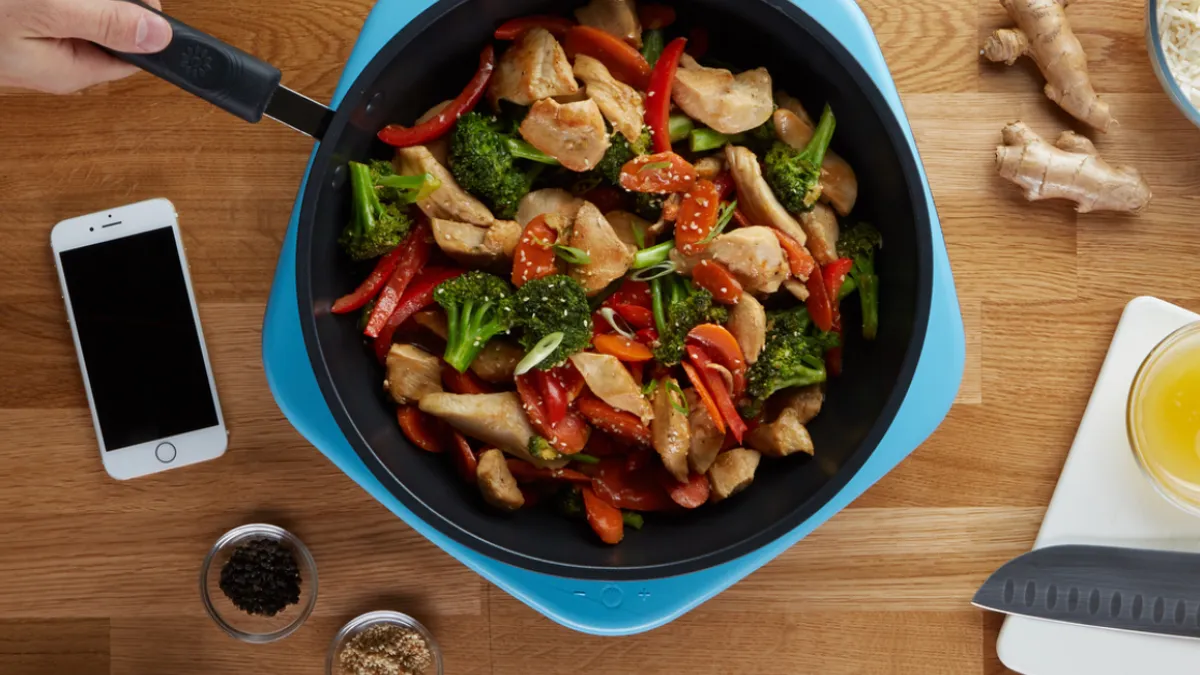Dive Brief:
- More than half of consumers (55%) are eating at home more frequently since the pandemic began, but not everyone is enjoying this new approach to mealtime, according to a new report by sales and marketing agency Acosta. Of those eating at home, 25% are tired of having to cook more frequently while 35% have developed a newfound passion for cooking.
- Overall, 11% of people are eating breakfast more frequently at home every day compared to before the pandemic. Dinnertime is the second most common meal to occur at home with 12% more people saying they partake in home-cooked fare daily. Lunch is eaten at home every day by 13% more individuals.
- Acosta determined the biggest challenge shoppers reported as a result of more at-home meals were grocery shopping due to the risk of exposure to COVID-19 (45%), coming up with different meal ideas every day (40%), lacking the necessary ingredients (38%) and improving cooking skills (17%).
Dive Insight:
The home kitchen has seen a resurgence over the past several months, with at least a third of people eating at home for all three meals, according to Acosta. This has provided a major tailwind for retail food sales. In March alone, grocery store sales jumped 29.3% compared to the same time period in 2019. Sales remained elevated on a year-over-year basis into June, with the industry posting a sales gain of 11.7% compared to June 2019 as consumers remained heavily reliant on supermarkets during the COVID-19 pandemic.
When it comes to shopping, about one in five consumers reported making healthier shopping choices with functional ingredients being a top priority. About half of those surveyed said they are eating less healthy.
These patterns have bolstered sales for many legacy brands that are able to provide both better-for-you and indulgent options. Comparing the last four weeks of this year's second quarter with the same time last year, Bank of America analysts found large growth rates for many CPGs such as Campbell Soup, whose sales were up 25.6%, Hormel with an increase of 38.2%, Conagra where sales rose 30.5% and Kraft Heinz where sales jumped 24.7%.
But while legacy brands are experiencing a resurgence, consumers also are interested in innovation to keep meals interesting. Of those consumers cooking at home, a Mattson survey indicated 39% will be looking for new products as soon as the system returns to normal. As the Acosta data shows, people are getting tired of cooking at home, so new offerings are key to keeping people excited — and maintaining interest as more restaurants open up.
Successful brands will need to provide products that are a good value, which a Mattson survey indicated will be a top trend. These brands also will need to adapt and innovate to align with trends such as e-commerce. Colin Stewart, executive vice president of business intelligence at Acosta, said his firm predicts online food and alcohol spending will increase 30% this year.
Grocers are also focusing on innovation and providing more meal options for shoppers. Many have boosted their lineup of fully cooked and heat-and-eat meals, with some linking up with restaurants to offer fully prepared lunches and dinners. Retailers are also trying to offer more intermediate-prep options that make cooking easier for new at-home chefs and those tired of preparing time-consuming recipes, including packaged pre-sliced veggies and pre-seasoned meats. The Giant Company, for one, recently introduced a new Cook-In-Bag line of seasoned proteins that shoppers can throw in the oven or slow cooker.













